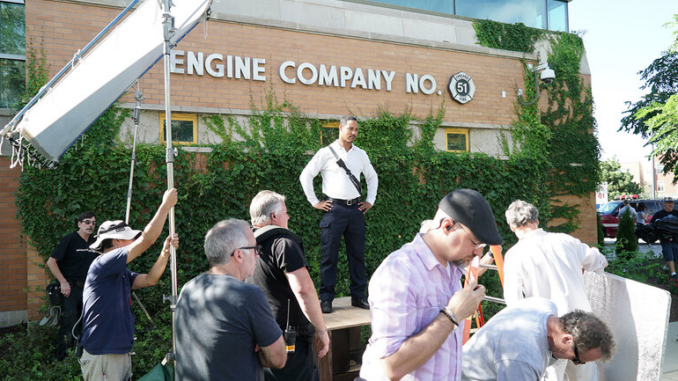
Is Chicago Fire Based on Real Life? A Look at the Facts and Fiction of Firehouse 51
The One Chicago series is an action-packed thriller that revolves around first responders saving lives every day in the Windy City. As Chicago Fire maintains its status as a flagship series with 13 seasons and counting, many may wonder — how much of the show is based on real life?
Series creator Dick Wolf is famous for his headline-grabbing tactics in the writers’ room of Law & Order, but does Chicago Fire follow the same ideology? While Law & Order sometimes pulls details from real stories to give its detectives some fuel, the One Chicago series tends to focus on the everyday realities of first responders, allowing the series to get pretty creative when it comes to putting out a fire inferno. A sheriff presiding over a firefighter wedding? Very realistic. Two firefighters jumped off a four-story building to escape a fiery explosion? That’s an unlikely story.
RELATED: A Deep Dive into All the Chicago Fire Filming Locations So, are any Chicago Fire episodes based on true stories? Is Firehouse 51 a real fire station that fans can visit? Let’s take a look at the facts and fiction of Chicago Fire.
Is Chicago Fire based on real life?
Simply put, no.
While the action-packed nature of a horror show like Chicago Fire precludes episodes from being based on actual rescue calls, the show honors real-life Windy City firefighters in a number of ways.
Dushone Roman—a California firefighter and star of Wolf’s nonfiction series L.A. Fire & Rescue—weighed in on how Chicago Fire reflects reality and which details veer toward fiction. When considering which details of Chicago Fire are most realistic to his day-to-day work, Roman told TV Insider that the show’s connections to on-call work are relatable.
“I love the back-and-forth. That’s exactly what we do in the fire department. Watching Chicago Fire brings back memories of what we do,” Roman explained. “They get it right for the most part, but in the medical scenes, there are some funny EMS scenes, like when oxygen is placed on a patient’s face incorrectly.”
In addition to drawing direct inspiration from Chicago Fire first responders, the Chicago Fire Department also worked with local fire unions to cast real firefighters as extras in rescue scenes. One of those extras turned his Chicago Fire Department guest role into a full-time role on the show — fan favorite Anthony Ferraris.
Real-life Chicago firefighter Tony Ferraris has been a part of the Firehouse 51 family since Season 3 of Chicago Fire, after making guest appearances in a few early episodes.
“On the first day of filming, the crew realized that no one in the cast could drive the crew,” Ferraris recalled in a 2020 interview with Wolf Entertainment. “[Former CFD deputy director] Steve Chikerotis, the show’s technical advisor, who I’ve known for years, asked me if I wanted to drive. I said yes, and it went pretty well. I started as an extra, and then Derek Haas approached me around episode five or six and asked me to read the script for him, and then they started writing for me.”
In addition to jumping behind the wheel and telling jokes at lunch with the crew, Ferraris also gave the Chicago Fire production team some insight into the reality of the show.
“I told [the showrunner] if we had crazy calls or things we said, but they also asked me a lot of questions,” Ferraris explained. “In the beginning, [former showrunner] Derek Haas would come to the fire station and walk with me while we were working… They would ask me things like, ‘Hey, if you broke down this door, what would you do?’ But our job, fighting fires, is stranger than fiction.”
When asked how accurately Chicago Fire depicts life in a fire station, Ferraris agreed with Roman that the camaraderie of the job reflects reality.
Ferraris continued, “We have a very dangerous job and we’re very close when the bell rings. But when we’re at the fire station, we’re going to be tough on each other. We play golf together; we do a lot of things together. I think that’s reflected on screen and it’s pretty realistic about life in the workplace. When you live with someone for 24 hours, you learn a lot about them and you do that for 88 days a year. It’s your second family.”
Chicago Fire may not follow any real-life stories when firefighters jump into trucks, but the relationships that form inside
